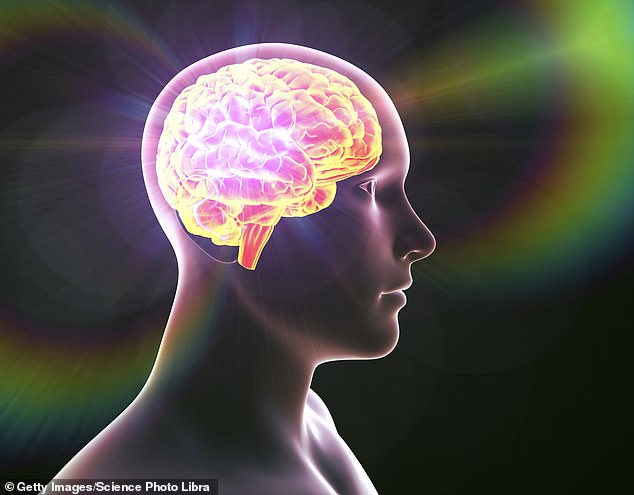For centuries, scientists have tried to unravel the mystery of human consciousness.
Many theories have emerged, often focusing on brain activity and neural connections.
But what if consciousness goes beyond just the brain?
A new, controversial theory suggests that our minds may actually tap into hidden dimensions of the universe.
This idea, proposed by physicist Michael Pravica, challenges traditional views of consciousness and brings a fresh perspective rooted in theoretical physics.
Hidden Dimensions and Consciousness
Pravica, a professor of physics at the University of Nevada, Las Vegas, believes that our minds can connect with invisible dimensions when we engage in creative, intellectual, or deeply reflective tasks like dreaming, creating art, or exploring philosophical ideas.
His theory is based on the concept of hyperdimensionality—the notion that the universe has more dimensions than the four we’re familiar with (height, length, width, and time).
While this theory pushes the boundaries of science, it’s drawn skepticism from some experts.
One physicist even argued that Pravica’s ideas are closer to science fiction than science.
Nevertheless, Pravica is committed to exploring this uncharted territory, seeing it as a potential breakthrough in understanding consciousness.
Traditional Views on Consciousness
Most scientific theories about consciousness remain centered on the brain.
One widely accepted view is that consciousness arises from the integration of information across different brain regions—the more interconnected these regions are, the more conscious we become.
Another theory suggests that top-down brain signals, where higher brain regions influence lower ones, play a key role in creating conscious experiences.
Pravica’s theory, however, steps away from these neurological explanations and ventures into theoretical physics, suggesting that our consciousness may transcend physical reality altogether.
In moments of heightened awareness, Pravica argues, our minds could be interacting with hidden dimensions beyond our usual perception.
How Hyperdimensionality Fits In
To grasp Pravica’s idea, imagine a two-dimensional being living in a flat world.
If a three-dimensional object, like a sphere, passed through that world, the 2D being would only see a growing and shrinking circle, unaware of the true 3D nature of the object.
Similarly, Pravica believes we live in a four-dimensional world but are unable to perceive any higher dimensions.
These hidden dimensions, he says, could be all around us, but we simply lack the sensory tools to detect them.
Pravica ties this concept to string theory, which posits that reality is made up of tiny vibrating strings that create everything in the universe.
These strings could be vibrating in dimensions we can’t perceive, affecting the physical world we do see.
While most physicists accept string theory as a valid framework, Pravica’s leap to connect it with human consciousness is where his idea becomes controversial.
Science or Spirituality?
Pravica’s theory not only blends science and physics, but also incorporates his personal spiritual beliefs.
As an Orthodox Christian, he sees hyperdimensionality as a bridge between science and faith.
For example, he suggests that Jesus could have been a hyperdimensional being, capable of moving between our world and a higher-dimensional realm, like heaven.
This blending of science and spirituality is where some scientists draw the line.
Stephen Holler, a physicist at Fordham University, argues that Pravica’s approach is flawed, describing it as a “God of the gaps” theory—using divine intervention to explain scientific unknowns.
Holler believes this type of thinking hinders scientific progress by discouraging inquiry and embracing uncertainty.
Can We Prove Hidden Dimensions Exist?
One of the biggest challenges to Pravica’s theory is the lack of physical evidence for higher dimensions.
Even with advanced technology like the Large Hadron Collider (LHC) at CERN, which smashes particles together at nearly the speed of light, scientists have been unable to directly observe these hidden dimensions.
The LHC allows physicists to study incredibly small particles and forces, but even it cannot reach the sub-quantum scale needed to confirm hyperdimensionality.
Without concrete proof, critics argue that hyperdimensionality remains speculative.
Holler notes that just because we can mathematically conceive of higher dimensions, it doesn’t mean they exist or that our consciousness can interact with them.
The Future of Consciousness Studies
Despite the doubts surrounding his theory, Pravica remains hopeful.
He believes that advancements in technology could eventually provide the evidence needed to validate his ideas.
While we may not have the tools today to explore these hidden dimensions, Pravica is optimistic that future generations—perhaps even his children—will have the means to do so.
In the meantime, Pravica continues to support hyperdimensionality as a key to understanding consciousness, seeing it as essential to his purpose as a scientist and a human being.
For him, the pursuit of these ideas is more than just scientific curiosity—it’s a reason for living and learning.
What’s next for this bold theory? Only time, and perhaps future technological advancements, will tell.
